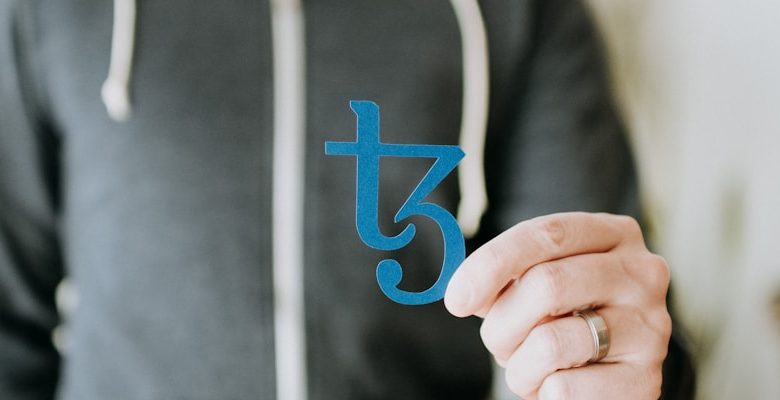How Blockchain is Powering the Internet of Things (IoT)

- Understanding the Intersection of Blockchain and IoT
- Exploring the Potential of Blockchain Technology in IoT
- Enhancing Security and Trust in IoT with Blockchain
- The Role of Smart Contracts in IoT Ecosystems
- Challenges and Opportunities of Integrating Blockchain with IoT
- Real-world Applications of Blockchain in Powering IoT Devices
Understanding the Intersection of Blockchain and IoT
The intersection of blockchain and IoT represents a groundbreaking development in the realm of technology. Blockchain, which is a decentralized and secure ledger system, has the potential to revolutionize the way IoT devices communicate and transact data. By leveraging blockchain technology, IoT devices can securely record and store data in a tamper-proof manner.
One key advantage of using blockchain in conjunction with IoT is the enhanced security it provides. The decentralized nature of blockchain ensures that data is not stored in a single location, making it less vulnerable to cyber attacks. This increased security is crucial in an IoT ecosystem where sensitive data is constantly being exchanged between devices.
Furthermore, blockchain can also streamline the process of verifying and authenticating IoT devices. By using blockchain-based digital signatures, devices can securely communicate with each other without the need for a central authority. This not only enhances the efficiency of IoT networks but also reduces the risk of unauthorized access.
Another benefit of integrating blockchain with IoT is the improved transparency and traceability it offers. With blockchain, every transaction or data exchange is recorded in a transparent and immutable manner. This allows for greater accountability and auditability in IoT networks, which is essential for industries that require strict compliance with regulations.
In conclusion, the convergence of blockchain and IoT has the potential to unlock a new era of innovation and efficiency in the world of technology. By combining the security, transparency, and decentralization of blockchain with the connectivity and intelligence of IoT devices, we can create a more secure, efficient, and trustworthy ecosystem for the future.
Exploring the Potential of Blockchain Technology in IoT
Blockchain technology has the potential to revolutionize the Internet of Things (IoT) by providing a secure and transparent way of recording transactions and data. By creating a decentralized and immutable ledger, blockchain can ensure the integrity and authenticity of IoT devices and the data they generate.
One of the key advantages of using blockchain in IoT is enhanced security. With blockchain, each transaction is securely recorded and verified across a network of computers, making it nearly impossible for hackers to alter data or disrupt the system. This added layer of security is crucial in IoT applications where sensitive information is being transmitted between devices.
Another benefit of blockchain in IoT is increased trust and transparency. With blockchain, all transactions and data exchanges are recorded on a public ledger, allowing for greater accountability and traceability. This transparency can help to build trust among users and ensure that IoT devices are operating as intended.
Blockchain technology also has the potential to streamline processes and reduce costs in IoT applications. By eliminating the need for intermediaries and central authorities, blockchain can facilitate peer-to-peer transactions and automate workflows. This can lead to greater efficiency and lower operational costs for IoT deployments.
Overall, the combination of blockchain and IoT holds great promise for the future of connected devices and smart technologies. By leveraging the security, transparency, and efficiency of blockchain technology, IoT applications can reach new levels of innovation and scalability.
Enhancing Security and Trust in IoT with Blockchain
Blockchain technology is playing a crucial role in enhancing security and trust in the Internet of Things (IoT) ecosystem. By leveraging the decentralized and immutable nature of blockchain, IoT devices can securely communicate and transact with each other without the need for a central authority. This helps in reducing the risk of cyber attacks and data breaches, ensuring the integrity and confidentiality of IoT data.
One of the key benefits of using blockchain in IoT is that it provides a tamper-proof record of all transactions and interactions between devices. This ensures that the data exchanged between IoT devices remains secure and trustworthy, helping to build a more resilient and reliable IoT network. Additionally, blockchain technology enables the implementation of smart contracts, which are self-executing contracts with the terms of the agreement directly written into lines of code. This automates the process of verifying and enforcing agreements between IoT devices, further enhancing security and trust in the ecosystem.
Furthermore, blockchain technology enhances data integrity by creating a transparent and auditable record of all transactions and events within the IoT network. This helps in detecting any unauthorized changes or malicious activities, allowing for quick mitigation and response to potential security threats. By combining the power of blockchain with IoT, organizations can create a more secure and trustworthy environment for their connected devices, ensuring the seamless and efficient operation of their IoT systems.
The Role of Smart Contracts in IoT Ecosystems
Smart contracts play a crucial role in IoT ecosystems by enabling automated and secure transactions between devices. These self-executing contracts are stored on a blockchain, ensuring transparency and immutability. Smart contracts eliminate the need for intermediaries, reducing costs and increasing efficiency in IoT networks.
By leveraging blockchain technology, IoT devices can autonomously interact with each other based on predefined conditions set in smart contracts. This enables seamless communication and data exchange without human intervention. Smart contracts also enhance the security of IoT networks by providing cryptographic protection against tampering and unauthorized access.
Furthermore, smart contracts enable the monetization of IoT data through microtransactions. Devices can exchange data and services in real-time, creating new revenue streams for IoT ecosystem participants. This decentralized approach to data exchange fosters innovation and collaboration among devices, driving the growth of the IoT industry.
Challenges and Opportunities of Integrating Blockchain with IoT
The integration of blockchain with IoT presents both challenges and opportunities for businesses and industries looking to leverage the combined power of these technologies. One of the main challenges is the complexity of integrating two cutting-edge technologies that operate on different principles. However, this challenge also brings opportunities for innovation and development in the field of IoT.
One of the key challenges of integrating blockchain with IoT is the issue of scalability. As the number of connected devices continues to grow, so does the volume of data generated by these devices. Blockchain technology, while secure and decentralized, can struggle to handle the vast amounts of data generated by IoT devices. This challenge presents an opportunity for developers to create more efficient and scalable blockchain solutions tailored to the needs of IoT applications.
Another challenge is the security and privacy of data transmitted between IoT devices. With blockchain technology, data is encrypted and stored in a secure and tamper-proof manner. However, ensuring the security of IoT devices themselves remains a challenge. This challenge opens up opportunities for the development of secure IoT devices and protocols that can seamlessly integrate with blockchain technology to ensure end-to-end security and privacy.
Overall, the integration of blockchain with IoT has the potential to revolutionize the way we interact with technology and data. By overcoming the challenges and seizing the opportunities presented by this integration, businesses can unlock new possibilities for innovation, efficiency, and security in the IoT landscape.
Real-world Applications of Blockchain in Powering IoT Devices
One of the real-world applications of blockchain technology in powering IoT devices is in supply chain management. By utilizing blockchain to create a secure and transparent ledger of transactions, companies can track the movement of goods from the manufacturer to the end consumer. This not only helps in reducing fraud and counterfeit products but also ensures the authenticity and quality of the products.
Another application is in the field of smart homes. Blockchain technology can enable IoT devices within a home to securely communicate and interact with each other without the need for a central authority. This can lead to increased efficiency in energy consumption, as devices can automatically adjust settings based on real-time data from other connected devices.
Blockchain can also be used in the healthcare industry to securely store and share patient data among different IoT devices. This can lead to improved patient care, as healthcare providers can access accurate and up-to-date information about a patient’s medical history and treatment plans.
Moreover, blockchain technology can be applied in the automotive industry to create secure digital identities for vehicles. This can help in preventing car theft and fraud, as well as enabling automated payments for services such as tolls and parking.
Overall, the integration of blockchain technology with IoT devices has the potential to revolutionize various industries by providing a secure and decentralized platform for data exchange and communication. From supply chain management to healthcare and smart homes, blockchain is proving to be a powerful tool in powering the Internet of Things.



